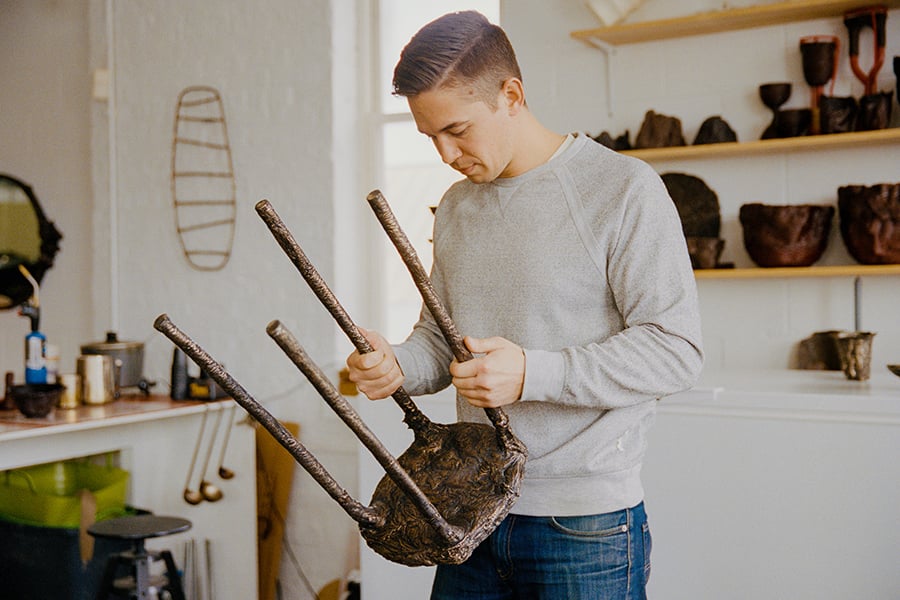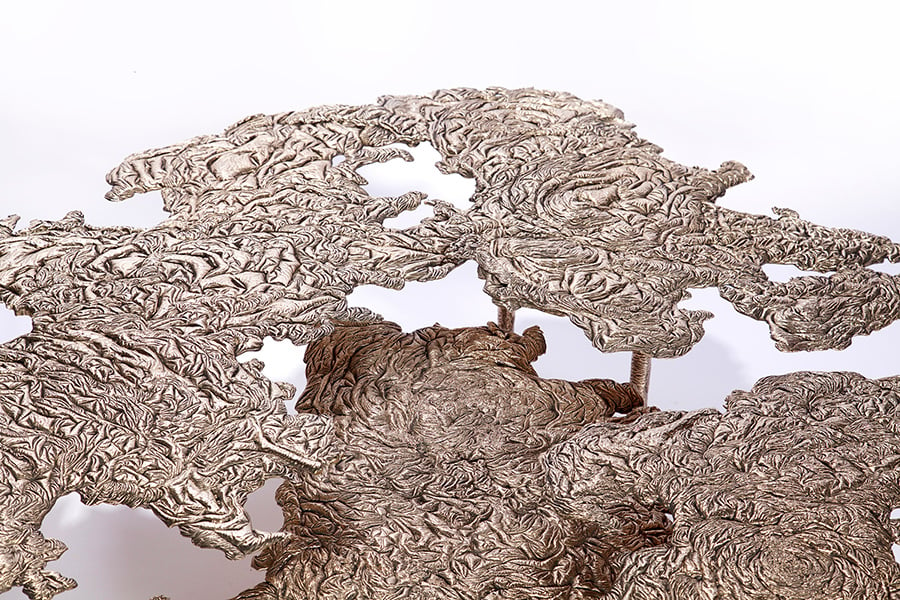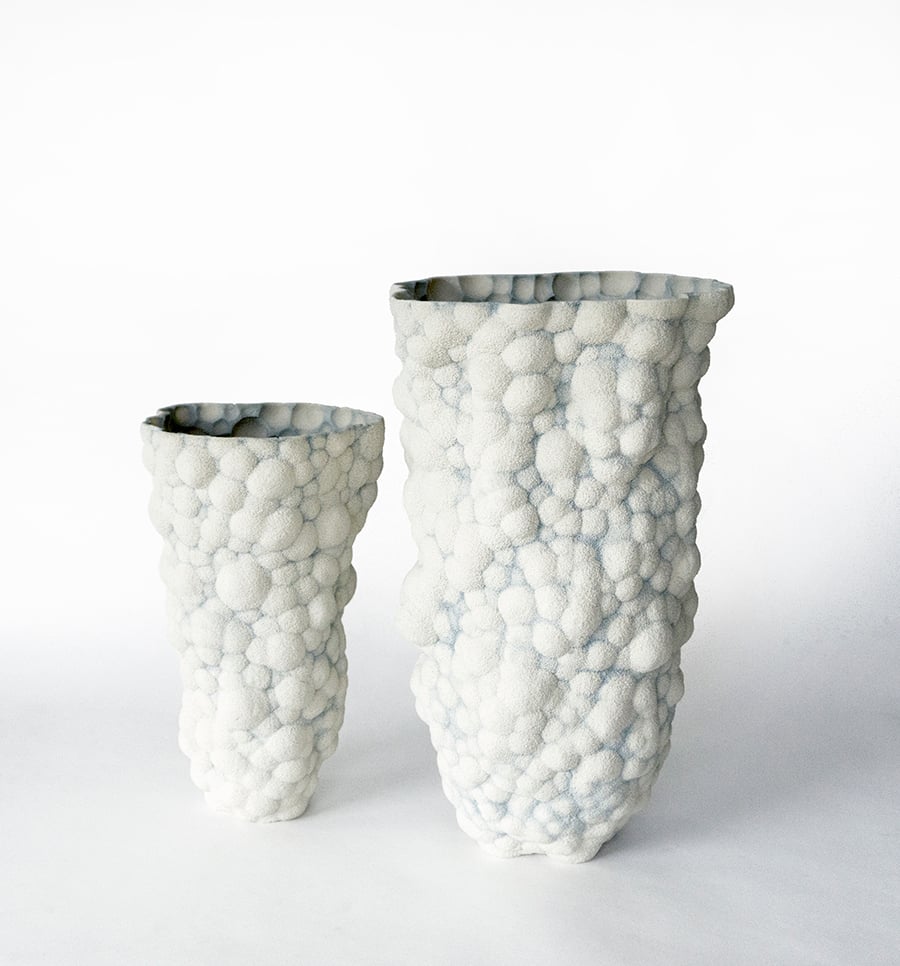
December 21, 2017
Meet the Chicago Designer Using Ice to Create Unique Bronze Furniture and Objects
Steven Haulenbeek uses a material experimentation–driven process to fashion intensely-textured works.

The idea of casting hot wax in ice might seem counterintuitive, but for Steven Haulenbeek, the unlikely combination represents a world of potential. Developed over the past seven years, his Ice-Cast Bronze series comprises a cumulative collection of objects and furniture.
The series stemmed from an unexpected discovery. On a frigid winter day seven years ago, Haulenbeek was tinkering at the West Supply’s foundry in Chicago’s Hermosa neighborhood. He decided to see what would happen if he poured hot wax on a frozen sidewalk puddle. “The temperature shock caused it to ripple,” he describes. Inspired by what he saw, Haulenbeek set out to capture the resulting form’s rich textural quality.
By chipping into ice blocks, he creates molds, into which he pours in hot wax. The cooled wax form, which displays a complex texture, is then used in the ancient process of lost-wax bronze casting. During this process, a sculptor casts a series of positive and negative molds from this first wax cast. Ultimately, he or she encases a positive wax mold—i.e. one in the shape of the final product—in sand. Pouring molten bronze into the mold burns out the wax, letting the metal assume its shape. The sand supports the metal as it hardens into the end-result object.

Forging a close relationship with his materials’ natural properties, Haulenbeek has struck a balance between control and chance. “I don’t begin by planning out or drafting how I’m going to get from point A to point B,” he admits. “Even if I design the infrastructure, I don’t see all the small details until I pull the wax out of the ice.” At first, he employed freezer-scale ice slabs but has since moved to different formats that have allowed him to create larger pieces. “I’ve thought about going down to Lake Michigan and working with frozen wave formations.”
Haulenbeek’s latest Resin Bonded Sand (RBS) series grew out of the Ice Cast Bronze collection on an intuitive and literal level. “I was working with binding-resin on something else at the time and experimented by mixing it with the sand I salvaged from the foundry floor,” he explains. By mixing the resin and sand, he discovered a new material that is sturdy but malleable enough to carve. Casting slabs of the new composite, Haulenbeek sculpted directly into the material using tools he initially adapted for the Ice-Cast Bronze series. “The first result was a kind of shell which led to a series of vessels,” he says. These initial works revealed different surface treatments and textures.

By playing with the different amounts of resin, Haulenbeek was able to find the sweet spots of the material, creating create extremely thin forms that could be scaled to larger pieces like tables and consoles. (Different variations are currently available at New York gallery The Future Perfect.) Continuing this trajectory, the designer has begun a foray into glass blowing, another process where sand metamorphizes into an entirely different material.
With such a bold process-driven, craft-led, and experimental approach, it’s easy to overlook the fact that Haulenbeek began his career in the contract market. The Michigan native worked for historical furniture brand Holly Hunt. Though initially trained as a sculptor, he took the job as a way to gain real-world experience and see how design ideas could be applied for wider consumption. Let go after two and a half years due to the recession, Haulenbeek was given the kick he needed to go out on his own.
Still, this foundation remains important in his practice today. He continues to develop industrial design projects that are licensed to various interior design and furniture brands. Until recently, he says, it’s been important for him to maintain a clear boundary between these two facets of his work. However, Haulenbeek has begun to reconsider this separation. “I’ve made a better name for myself with unique pieces,” he admits. “I’m working with galleries now more than anything. I’ve thought about pulling the licensing practice, the lighting and furniture, back into the same practice.”
You may also enjoy “MIT’s Self-Assembly Lab Showcases a New 3D Printing Process at Design Miami/ 2017.”













